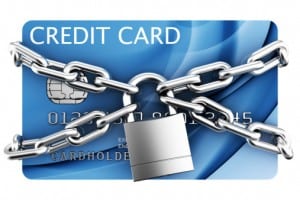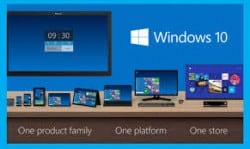
Google Draws the Line With Ad Serving Chrome Browser Extensions
Google has been recently removing Chrome extensions published on the Chrome Web Store that inject advertisements into the browser without previously informing the user. All extensions published on the Chrome Web Store must adhere to the Developer Program Policies, requiring that extensions may show advertisements only if:
- This behavior is clearly disclosed to the user.
- There is clear attribution of the ads’ source wherever those ads appear.
- The ads do not interfere with any native ads or functionality of the website.
- The ads do not mimic or impersonate the native ads or content on the third-party website, and the ads adhere to the content policy on impersonation and deceptive behavior
(Chrome Developer Program Policies)

A Tip to Help Keep Your Credit Card Safe Online
As news reports of online security breaches occur with increasing frequency, people are becoming more concerned about the safety of conducting financial transactions over the internet.
While there are security risks to using a credit card online that are beyond our control, one practical step you can take to avoid having your credit card compromised is by using a virtual credit card.
A virtual credit card is a unique temporary credit card number that is generated and linked to your real credit card. The temporary credit card is only available for a single transaction, after which it becomes unusable.
If your credit card number happens to get stolen somehow in a security breach, you are safe because the stolen card is no longer usable, and the thief does not have your actual real card number. You can also place a dollar limit on the card, which prevents an online vendor from placing a greater charge than you expect.
Virtual card numbers are becoming a very common feature offered by credit card companies to reduce the risk of unauthorized transactions. The service is usually accessed by the user on the credit card issuer’s account management website. If you are unsure whether or not your credit card issuer offers this beneficial service or how to access it, please contact their customer service department directly for more information.
~Ted Eiler

Microsoft Announces Forthcoming Windows 10
Microsoft held an event in San Francisco on September 30, highlighting “what’s next for Windows” with the upcoming release of Windows 10 operating system.
Interestingly, they decided to skip past version number 9 for an unexplained reason, perhaps to distance itself from the stigmatized Windows 8, or to make the number on par with Apple’s OS X. No official release date was announced, rumor has it is coming out sometime later in 2015.
Due to the bad press and poor reception Microsoft received with Windows 8, they are hoping to make a big comeback with this next release. The big problem with Windows 8 is that Microsoft attempted to make an operating system that was tailored to touchscreen and tablet devices, however in doing so they crippled the functionality of the classic Windows desktop environment people have been familiar with now for decades (ie. the removal of the classic start button with start menu, replaced by the touch friendly modern start screen). Read more…

JPMorgan Chase Data Breach Affects 76 Million Households
A massive cyberattack against JPMorgan Chase over the summer compromised account information of 76 million households and 7 million small businesses. The company said that names, addresses, phone numbers and email addresses were stolen from customers who use the websites Chase.com and JPMorganOnline, as well as the ChaseMobile and JPMorgan Mobile apps.
On a positive note, JPMorgan Chase said “there is no evidence that account information for such affected customers – account numbers, passwords, user IDs, dates of birth or Social Security Numbers – was compromised during the attack.” The bank stated in a post on its Chase.com website that it doesn’t believe customers need to change their password or account information.
Customers however should carefully be on the lookout for unsolicited scam phone calls and emails from people posing as bank representatives. If you need to contact your bank, always initiate contact by using the phone number listed on you bank statement, never respond to a request for information via an inbound phone call or email.
For more info check out the following news article by USATODAY.
~Ted Eiler

Microsoft To End Support for Old Versions of Internet Explorer
After January 12, 2016, Microsoft will only release important updates for the most current version of Internet Explorer available on a supported operating system.
For users of Windows Vista, you must be running Internet Explorer 9 to continue receiving updates, for Windows 7 and 8 you must be running Internet Explorer 11. Internet Explorer 11 is installed with Windows 8.1 by default.
Support for Internet Explorer 8 will drop off entirely. Currently over 20 percent of computers running a desktop OS are still using this old version according to data from netmarketshare.com.
As security holes are continually being discovered and patched in Internet Explorer via Windows Update, it is highly recommended that you are running a supported version to stay as up to date and secure as possible going forward.
For more details, check out the following article from ZDNet.com.
~Ted Eiler





















